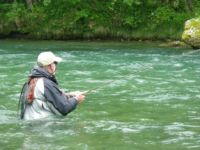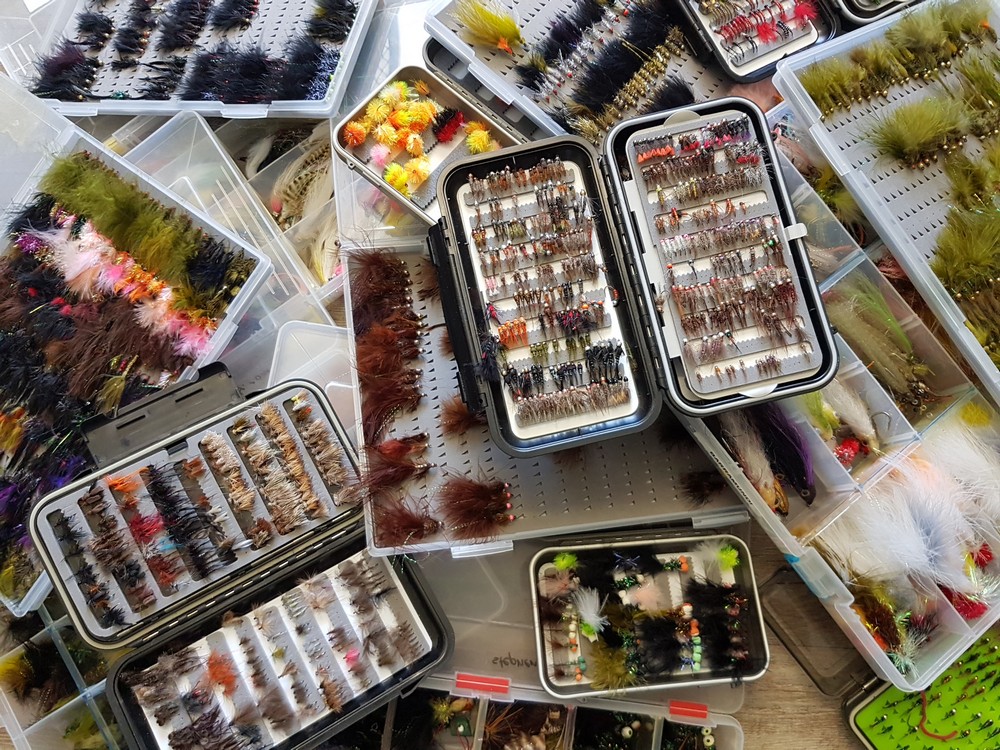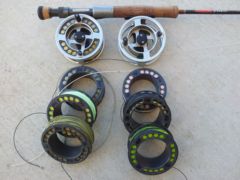Articles parent
{{start}}
Not for use in posts … just keeps the articles page category in the same drop down list.
{{end}}

{{+1}}Knots – Loop to loop connections – native fish{{-1}}
{{start}}
Using this process if I decided that I want to swap from my existing leader to one of my pre prepared leaders that is stored on a 'leader pad', complete with its fly or team of flies, all I need to forfeit is around one minute of my fishing time.{{end}}

{{+1}}Knots – Chatto’s 2 turn loop knot{{-1}}
{{start}}
This knot is very simple to tie and because of its figure eight configuration is relatively strong. It also has the advantage over the other many other loop knots in that the two parts of line coming out of the actual knot are next to each other so the actual open part of the loop can be as narrow as just the two thicknesses of line.{{end}}
{{+1}}#6 weight fly rods{{-1}}
{{start}}
A long time ago I decided that #6 weight fly rods were the right weight of fly rod for still water fishing for trout. Since then i have used #6 weight fly rods in many trout fisheries overseas and in Australia and have never for a minute considered changing to a different rod class.{{end}}

{{+1}}Getting started – saltwater flies{{-1}}
{{start}}
- Getting started - dry trout flies
- Getting started - wet trout flies
- Getting started - bass and native fish flies
- Getting started - the gear
Salt water flies are flies that have been designed specifically for use in salt water to catch fish that live full time or part of their life cycle in salt water environments.
Wet flies.
By far the majority of salt water flies have been designed to be fished sub surface.
Blue water flies
Estuary flies
Specifically designed for use in estuarine environments these are just a very small random sample of flies specifically designed to be fish in river mouths, saline lakes and lagoons, sand flats and other estuary type environments.
Salt water dry flies
Designed to be fished on the surface
There are much fewer flies designed to be fished on the surface in salt water environment and these are just a couple of the key ones.
{{end}}

{{+1}}River set up for short & long leader nymphing – competitions{{-1}}
{{start}}
Over the last few years myself and most other competition fly fishers have to differing degrees come to grips with the French leader style of fly fishing. That technique for me had evolved into fishing a 9 meter Hends Camou leader. It was a good set up but for me it had severe limitations in anything but a windless day or a day with slight winds at your back.{{end}}
{{+1}}AFTMA fly line ratings{{-1}}
{{start}}
This post provides a schedule which shows what grains of weight matched up with the various AFTM line weights.{{end}}
{{+1}}Rock hopping -safety first{{-1}}
{{start}}
In recent years there has been a number of fatalities off the rocks and this article has only one purpose and that is to remind people that its easy to overestimate your own ability and equally easy to underestimate the forces of nature that may be working against you.{{end}}

{{+1}}Getting started – flies{{-1}}
{{start}}
Flies catch more fly-fishers than fish. One of the things I try to promote is the importance of limiting most if not all of your fly box to just those flies that you are confident work for you, you understand what they can be used to represent, and you know how to fish.{{end}}

{{+1}}Getting started – the gear{{-1}}
{{start}}
A lot has been written on what gear you should buy when you first start out but by the time you have sifted through the volumes you'll probably be as confused as I was when I first started out fly fishing. Now that I'm a little way down the track it has pretty well fallen into place.{{end}}

{{+1}}Aspects of lake craft{{-1}}
{{start}}
Reading a lake or impoundment is no less important to the successful fly fisher than reading a stream or river. Lakes and impoundments are not just big volumes of homogeneous water denuded of any structure even though at first glance that may be how they seem.{{end}}



























